The arrival of Independent to Brussels at the end of April has brought over 60 international galleries to the city center. Since its founding edition in 2010 in New York, Independent is a by-invitation only fair with a slower pace and a duration longer than the usual 4 to 5 days of most international art fairs.
The selection of galleries brought artists to Brussels that we rarely have the opportunity to see. The building hosting the event had an open plan structure through 5 floors and a floor-to-ceiling glass atrium connecting all levels. The hype was more than justified.
In a one-day packed mission, I attended Independent and the very established Art Brussels in its 34th edition. A little something caught my eye very quickly: the abundance of textile works at both fairs and more precisely, the use of oversize tapestries.
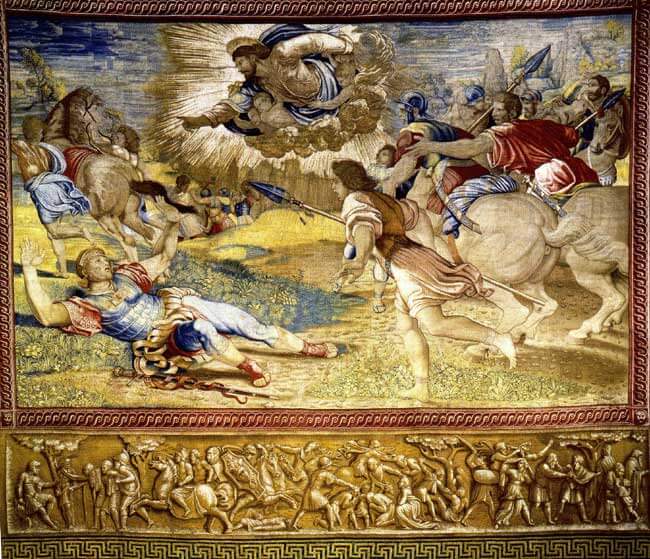
The Conversion of Saul, (St Paul), c. 1519
Tapestry
Vatican Museum
Of course, European history tells us that by the 16th century Brussels had become one of the centers tapestry production in Europe. Pope Leo X commissioned the ten enormous cartoons that Raphael designed on the theme of the Acts of the Apostles for the lower walls of the Sistine Chapel in 1515 and they were sent to one of the best tapestry workshops of the time in Brussels. Between the 14th and 18th centuries, tapestries had reached the highest esteem as valuable objects in Europe and were signifiers of wealth as well as used to depict religious narratives. Contemporary art has tended to classify these works more as a craft than fine art and therefore have been identified with ideas of domesticity. It seems very pertinent to rekindle the love for this textile art in their own cradle.
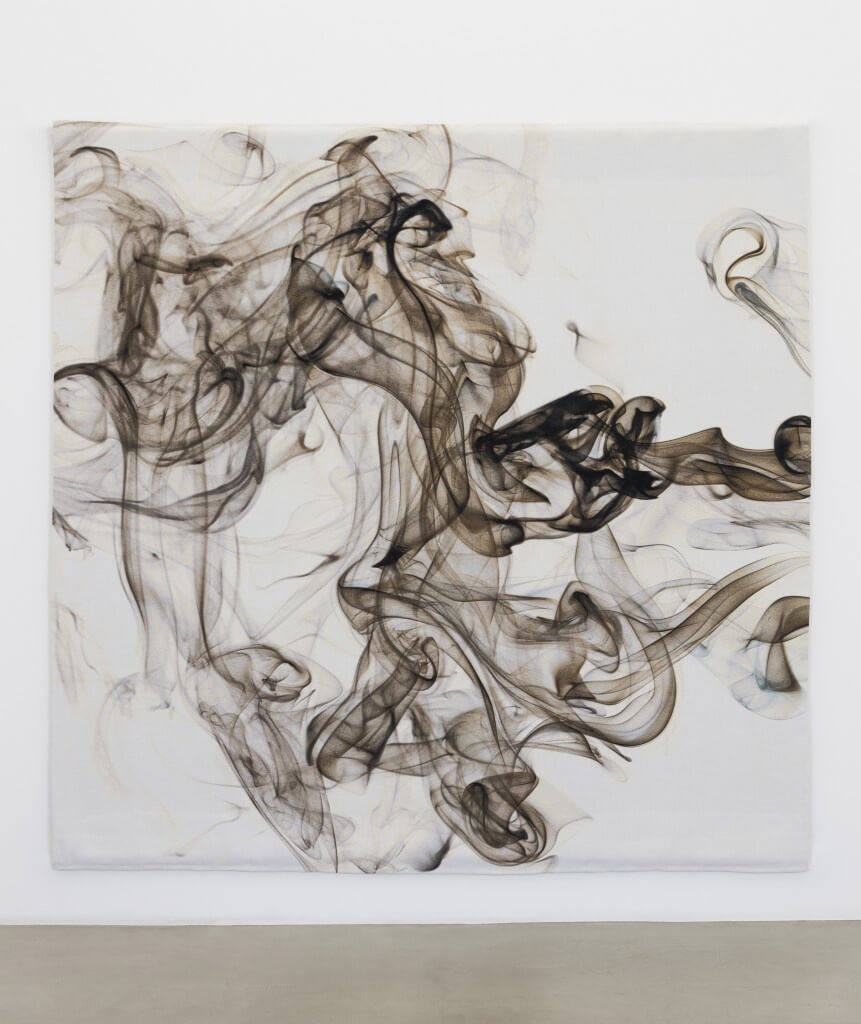
wictchcaraft, 2015
Cotton, polyester and Trevira
275 x 275 cm
Image courtesy: Pae White Studio, Los Angeles, kaufmann repetto, Milan/New York. Photo credit: Andrea Rossetti
Hang against Independent’s glass atrium with a floating-like effect in space, Pae White at Kaufmann Repetto, dazzles with the visual fluidity of the smoke depicted on her work. Working with a Belgium company to produce the textile, the photo-realistic quality of the weave and the textural physicality of the material contrasts with the intangible and ephemeral flow of the smoke. White’s practice plays at the interstice of craft and fine art. She uses humble materials but confers them a quiet grandeur. The piece has an aery softness despite its commanding presence.
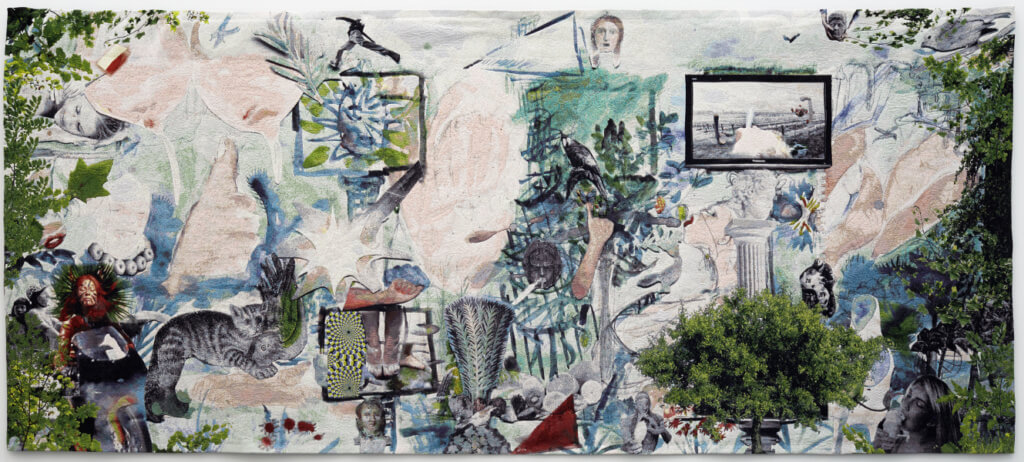
Swallow me, From Italy to Flander, a tapestry, 2015
200 x 462 cm
Image courtesy of the artist and MOT International
From MOT International, Laure Prouvost proposes an intricate visual narrative that poses a challenge to piece together a coherent linear story. The green and blueish tones come through in a predominantly subdued palette. There are somewhat hidden and subtly placed accents of strong physicality and overall a sense of wilderness and sexual innuendo. We are in front of a weaved collage imagery not dissimilar to the cacophony of her film installations.
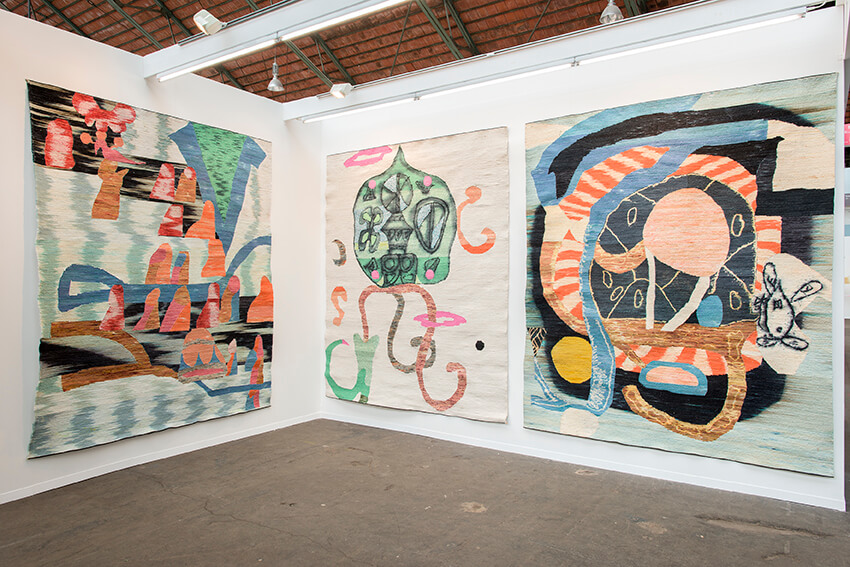
Installation view at Art Brussels 2016
Image courtesy of Sorry We’re Closed, Brussels. Photo credit: Hugard & Vanoverschelde Photography
Represented by Sorry We’re Closed with a solo booth at Art Brussels, Yann Gerstberger is a young French artist residing in Mexico. These works have a distinct Miro-esque aesthetic. Organic abstract forms urge the viewer to orchestrate the composition into recognizable figures. However, the fibers of the fabric do not have a solid colour-block consistency but a grainier, almost pixelated quality. One has to re-focus the eyesight and yet struggle to comprehend the unity of the piece. Gerstberger has an interest in online and digital media that fuses with the laborious traditional making of his work: dying threads by hand, cutting them according to the needed length and collaging them into the desired shapes as opposed to weaved into the fabric.
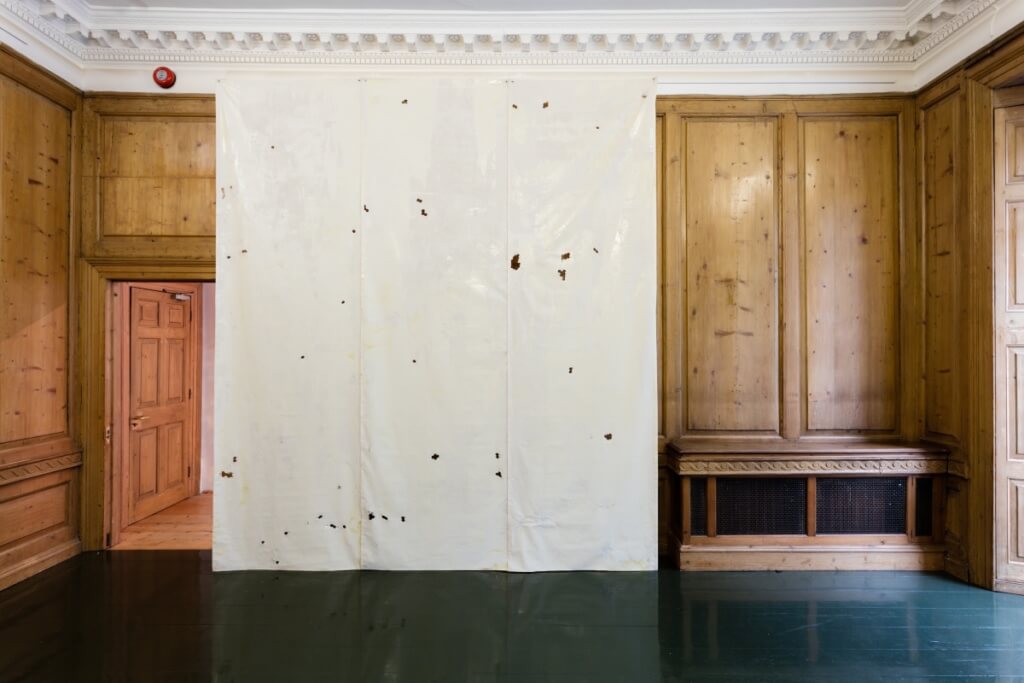
Untitled (curtain), 2015
Mixed media on reflective fabric, velcro
Image courtesy of Carl Kostyal and The Sunday Painter
Piotr Lakomy’s work is not self-described as a tapestry but it is indeed a floor-to-ceiling play on experimental industrial fabrics. Represented at Art Brussels by The Sunday Painter, Lakomy’s use of materials has a humble and visual austerity mixed with a futuristic aesthetic. The organic transformation of materials becomes part of the work. Indeed the honeycomb effect on the surface is broken out and patchy in places. There a metallic edge to this fabric panel, achieved through layers of an industrial reflective coating. Flickering light adds to the allure of the piece.
Four contemporary alternatives to update the historical take on tapestries.


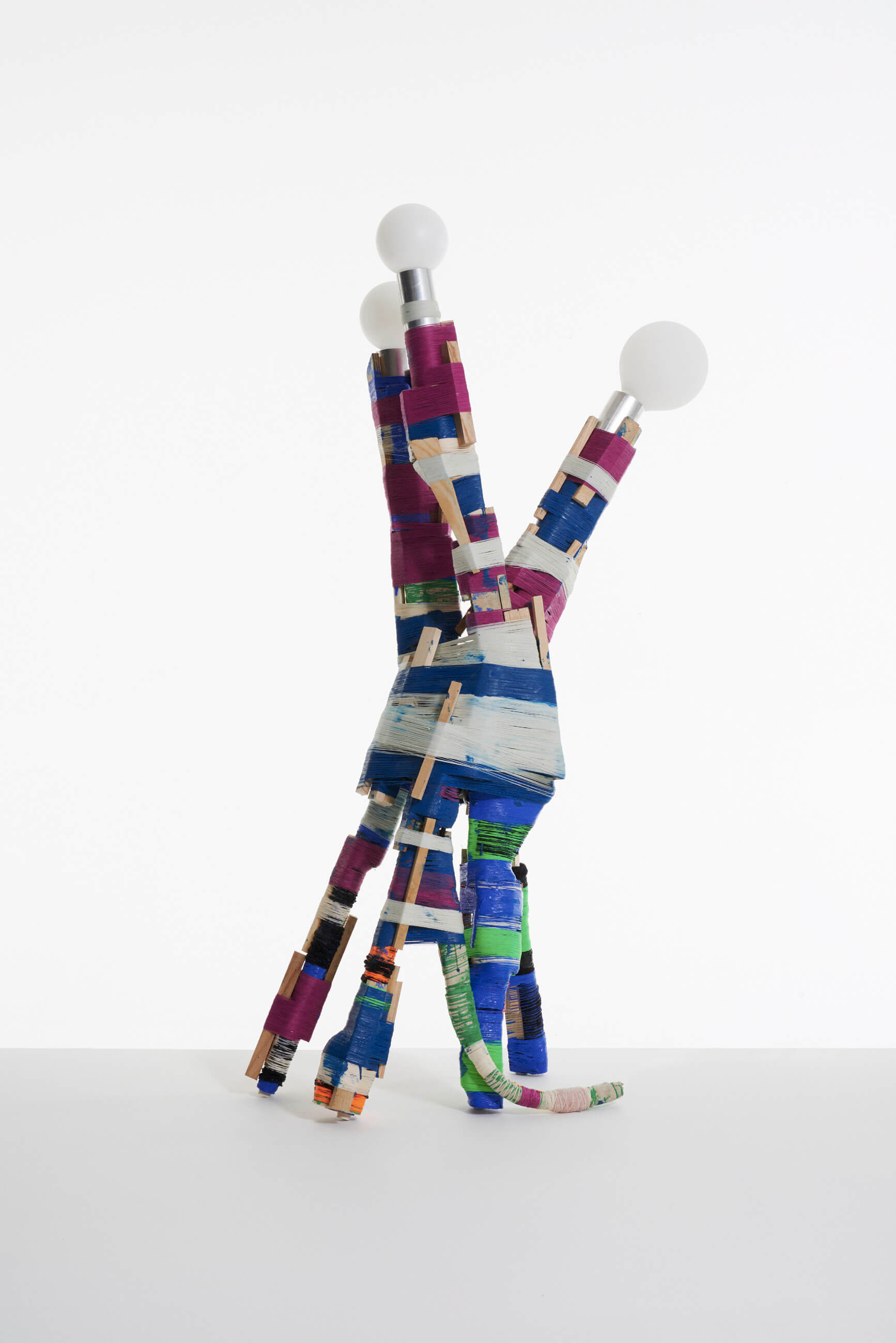
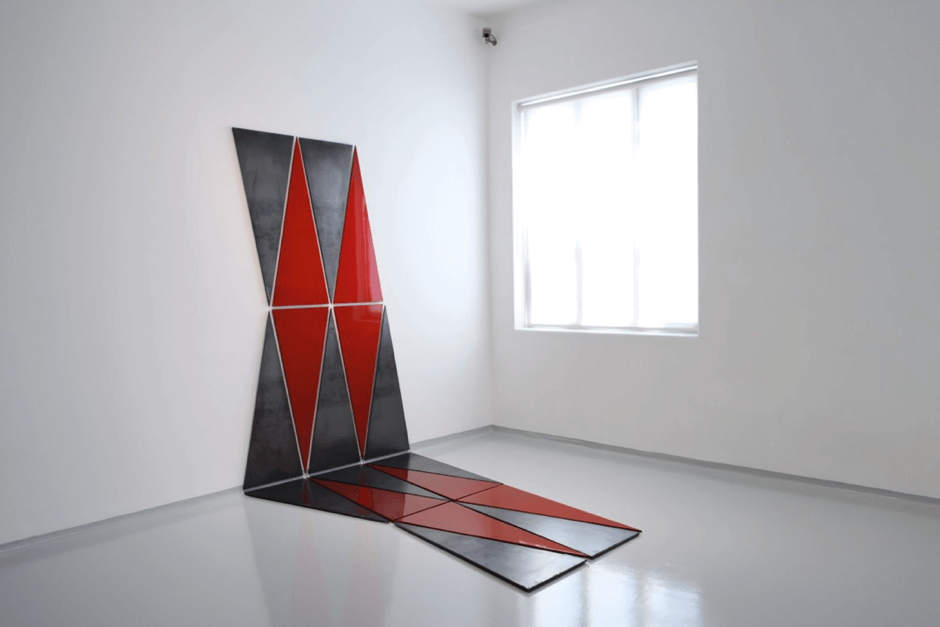

1 Comment
—